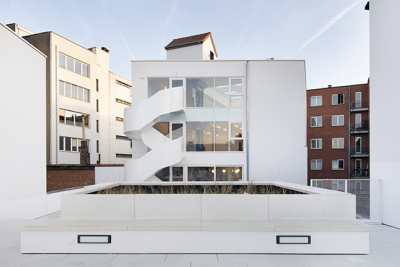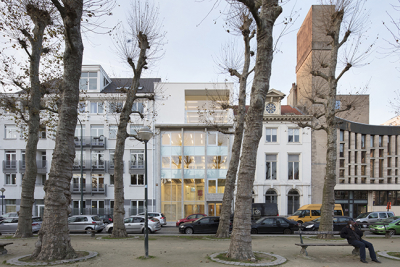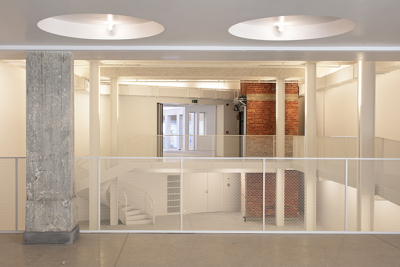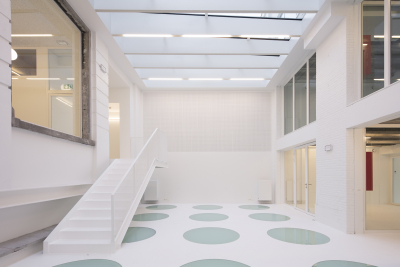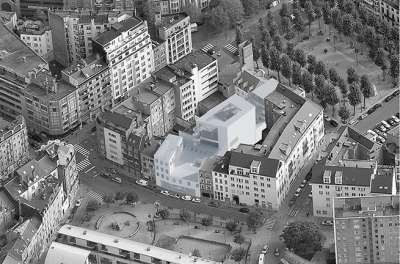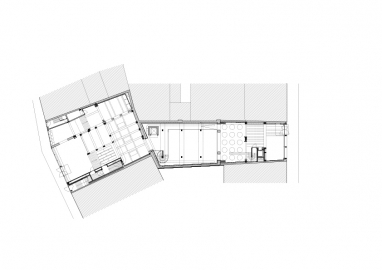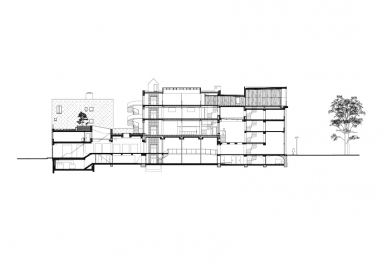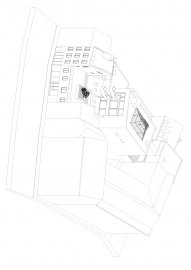MAD - Brussels Fashion and Design Platform
The initial project of the fashion and design center suggested the demolition of this three eclectic buildings without apparent qualities nested in the center of Brussels. We chose to work with the existing and to preserve the strange complexity and generous surface. This baroque assemblage is unified by the use of a wide palette of white materials.
This cultural centre for fashion and design, managed by the organization MAD, includes exhibition and events spaces, offices, co-working spaces for young creative start-ups, cafeteria, studios for artists in residence and four social housing units. An accumulation of diversified programs that takes advantage of the multiplicity of configurations offered by the complexity of existing buildings.
Dirty White Cube
Since a new building would not have contributed any significant added value, it was decided to keep all the existing buildings, with their deficiencies. Built over a period of sixty years, they were never meant to form a whole. The project then emerged as an ‘assisted ready-made’: through strategic demolitions and the addition of a few elements, the ill-conceived, the ill-fitting existing buildings are being rehabilitated.
The intention of V+ and Rotor is not to distinguish between old and new. The spaces are combined to create a rich array of spatial typologies, something which a new construction would never have been able to offer.
This idea is also applied in the clever finishing: the palette of ‘whites’ helps give a sense of unity to the building, almost giving the illusion of a full-scale model. At the same time, the use of different materials questions and complexifies the status of the white cube, since the different materials each have their own specificity. Realism, a certain didacticism, pragmatism and domesticity characterize this project. Between the lines, a provocative reference to the norms of fashion and architecture.
The interior finishing - all around the white color - combine with fantasy a wide variety of materials, textures and eclectic patterns. Paradoxically, it is the accumulation of heterogeneous white elements that creates a harmony between the different rooms. The spaces thus created play with the codes of the "white box" without suffering from a sanitized atmosphere.

